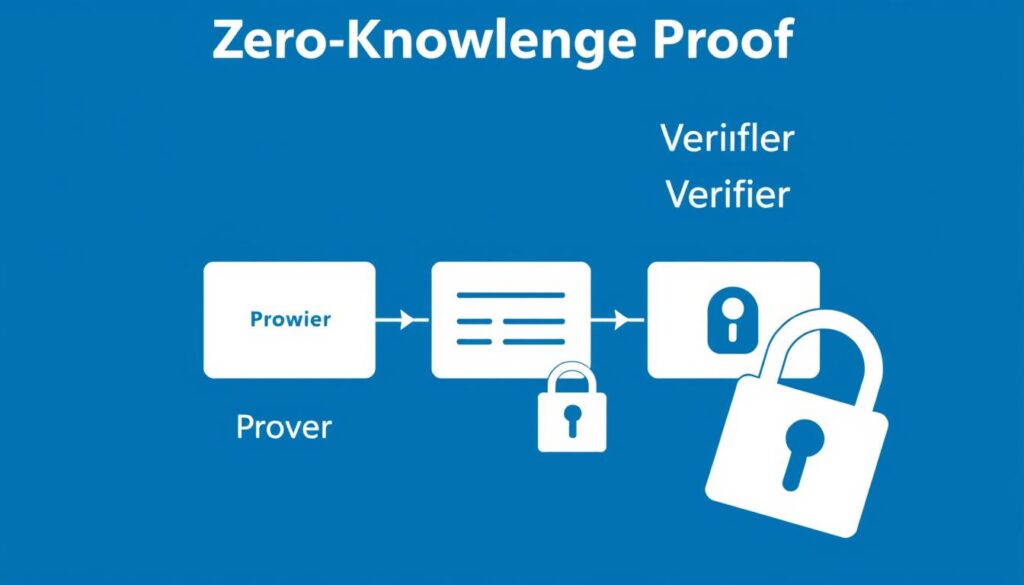Now Reading: Blockchain rollup optimistic zero knowledge Explained
- 01
Blockchain rollup optimistic zero knowledge Explained
Blockchain rollup optimistic zero knowledge Explained

Many digital networks face a common challenge: they struggle to handle large numbers of transactions quickly and affordably. This limitation affects user experience and prevents wider adoption of innovative technologies.
Layer 2 scaling solutions offer a promising approach to overcome these bottlenecks. These systems work alongside main networks to boost performance while maintaining security standards.
Rollups have emerged as a leading category of Layer 2 technologies. They process transactions outside the main chain, then bundle results for efficient submission. This approach distributes costs across multiple users, making individual transactions much more affordable.
Two primary types dominate the landscape today. Optimistic rollups assume transactions are valid unless challenged, while zero-knowledge rollups use mathematical proofs to verify correctness instantly.
Each method presents different trade-offs between speed, security, and complexity. Understanding these differences helps users choose the right solution for their specific needs.
Key Takeaways
- Layer 2 technologies address scalability challenges facing modern digital networks
- Rollups process transactions off-chain before submitting bundled data to the main network
- This approach significantly reduces individual transaction costs
- Two main validation methods exist with different security and performance characteristics
- These solutions make advanced technologies more practical for everyday use
- Understanding the trade-offs helps in selecting appropriate solutions
- Rollup technologies are essential for mainstream adoption of innovative systems
Introduction to Blockchain Rollups and Scaling Challenges
Contemporary decentralized platforms struggle with fundamental constraints that limit their practical application for mass adoption. The core issue lies in what experts call the blockchain trilemma. This concept suggests that distributed systems can only optimize two of three critical properties: decentralization, security, and scalability.
Why Rollups Are Essential for Blockchain Scalability
Ethereum’s main network processes approximately 15 transactions per second. During peak demand, fees can reach $40 per operation. This creates significant barriers for everyday users.
Traditional payment systems like VISA handle thousands of transactions per second. The dramatic difference highlights the scaling challenge facing modern networks. Rollups provide a practical solution to this bottleneck.
These innovative systems process transactions outside the main chain. They bundle multiple operations together before submitting them to the base layer. This approach maintains security while dramatically improving efficiency.
The Role of Layer 2 in Enhancing Throughput and Reducing Costs
Layer 2 solutions significantly increase network throughput. By handling transactions off-chain, they reduce the computational load on the primary network. This allows for much higher processing capacity.
The cost benefits are equally impressive. Rollups distribute fixed Layer 1 fees across many transactions. Users typically pay between $0.01 and $0.10 per operation instead of tens of dollars.
This economic improvement makes decentralized technologies accessible to broader audiences. The enhanced throughput and reduced costs represent critical advancements for practical blockchain adoption.
Understanding Optimistic Rollups
A fundamental trust mechanism powers one category of Layer 2 scaling solutions. These systems operate on the principle that all operations are presumed correct unless someone proves otherwise. This approach gives them their distinctive name.

The process begins when multiple operations are processed off-chain. They are grouped together into a single package before submission to the main network. This batch enters the system with the assumption that every included item is legitimate.
How Optimistic Rollups Assume Transaction Validity
Validators play a crucial role in maintaining system integrity. They must provide financial stakes as collateral for their work. If they process invalid items, they risk losing their deposited funds.
This economic incentive ensures honest participation throughout the validation process. Operators have strong reasons to verify each operation carefully. The system’s security relies on this financial accountability.
Mechanism of Fraud Proofs and Challenge Periods
Network participants can question suspicious activity during a specific window. This timeframe typically lasts about seven days in most implementations. During this interval, anyone can submit evidence of invalid activity.
A successful claim can cause the entire package to be rejected from the main network. This protection mechanism ensures only proper operations become permanent. The system maintains comprehensive records to enable verification.
| Implementation | Challenge Period Duration | Withdrawal Time Impact |
|---|---|---|
| Optimism | 7 days | 7+ days |
| Arbitrum | 7 days | 7+ days |
| Other Systems | Up to 14 days | Up to 2 weeks |
The extended waiting period represents a trade-off for enhanced efficiency. Users must plan for longer processing times when moving assets between layers. This delay ensures proper verification while maintaining scalability benefits.
Deep Dive into Zero-Knowledge Rollups
Mathematical certainty replaces trust assumptions in next-generation scaling systems. These solutions use advanced cryptography to validate operations before they reach the main network.

Explaining Validity Proofs and Zero-Knowledge Concepts
Validity proofs provide cryptographic guarantees for transaction integrity. A prover demonstrates correctness to a verifier without revealing sensitive details.
Two primary proof systems exist: STARKS and SNARKS. Each offers distinct advantages for verification efficiency and setup requirements.
The system employs two smart contracts on the main network. One manages deposits and blocks while the other specializes in proof validation.
Benefits in Speed, Security, and Privacy
Users experience near-instant withdrawals since verification occurs before Layer 1 submission. This eliminates lengthy challenge periods.
Security reaches new levels through mathematical certainty. Every operation receives cryptographic validation before finalization.
Privacy enhancements come from concealing transaction specifics during verification. Real-world implementations include zkSync Era and Starknet.
Blockchain Rollup Optimistic Zero Knowledge
Data submission patterns reveal the core operational differences between these Layer 2 solutions. Each system handles information transfer to the base chain in distinct ways that impact efficiency and security.
Key Differences in Data Submission and Validation
One technology posts complete transaction details to enable potential challenges. This approach requires more Layer 1 data storage but allows for verification during dispute windows.

The alternative method uses cryptographic proofs to validate operations before submission. This system transmits only state changes and verification evidence to the main network.
Both approaches process multiple operations off-chain before creating batch transactions. This shared methodology reduces congestion on the base layer while maintaining security.
Comparative Advantages and Trade-offs
The first solution offers simpler implementation and broader compatibility with existing infrastructure. However, it requires longer waiting periods for finality confirmation.
The second method provides instant finality and enhanced privacy through advanced cryptography. This comes with greater computational complexity and specialized setup requirements.
Understanding these distinctions helps users select appropriate scaling solutions. For a comprehensive comparison of these Layer 2, additional technical details explore specific use cases.
Comparative Analysis: Optimistic vs. ZK Rollups
Choosing between scaling solutions requires understanding their distinct operational characteristics. Each approach offers unique advantages that suit different applications and user needs.

Cost, Speed, and Finality Considerations
The two types differ significantly in their economic models. One system maintains lower operational expenses by avoiding complex computations for each batch.
Transaction confirmation times present another major difference. Users of one technology face waiting periods spanning several days for full settlement. The alternative provides near-instant confirmation through advanced verification methods.
| Feature | Type A | Type B |
|---|---|---|
| Withdrawal Time | 7-14 days | Few hours |
| Operational Cost | Lower | Higher |
| Finality Speed | Delayed | Immediate |
| Hardware Requirements | Simpler | Advanced |
User Implications and Network Security
User experience varies dramatically between these approaches. The extended waiting periods affect liquidity management for some applications.
Security models represent another critical distinction. One method relies on economic incentives and participant vigilance. The other provides mathematical certainty through advanced verification techniques.
Both significantly improve network throughput compared to base layer processing. However, their implementation complexity and privacy features differ substantially.
Conclusion
Today’s scaling landscape features two prominent methodologies that have proven effective in addressing network congestion challenges. Both approaches process multiple operations off-chain before submitting compressed data to the main network.
The fundamental difference lies in validation methods. One type assumes transactions are valid unless challenged during a specific period. The alternative uses mathematical proofs for immediate verification.
Currently, cost-effective solutions enjoy broader adoption due to simpler implementation. However, rapid technological advancement suggests this balance may shift as proof systems become more efficient.
Both methodologies inherit security from the underlying Layer 1 chain. Reversing processed batches would require reversing the base network itself. This ensures robust protection despite off-chain computation.
The optimal choice depends on specific application needs. Factors like settlement time, operational expenses, and implementation complexity guide selection. Understanding these trade-offs empowers informed decisions in the evolving ecosystem.
FAQ
What is the main difference between Optimistic and ZK rollups?
The core difference lies in how they validate transactions. Optimistic systems assume all transactions are valid unless someone challenges them during a set timeframe. ZK solutions use advanced cryptographic proofs to instantly verify correctness without revealing any details.
How long does it take to withdraw funds from an Optimistic rollup?
Withdrawals can take several days due to the challenge period. This window allows network participants to submit fraud proofs if they detect invalid activity. This delay is a trade-off for lower operational costs on the main network.
Do ZK rollups offer better privacy?
Yes, they provide stronger privacy features. Validity proofs confirm that a batch of transactions is correct without exposing any sensitive information. This enhances user confidentiality compared to other scaling methods.
Which type has faster finality for transactions?
Zero-knowledge systems offer near-instant finality. Once a validity proof is generated and verified on the main chain, the transactions are considered settled. This leads to a quicker user experience.
Are there any security risks with the "optimistic" approach?
The primary risk is relying on honest participants to monitor and challenge fraudulent activity. If no one submits a fraud proof during the challenge window, an invalid batch could be finalized. This makes active network participation crucial for security.
Why are these scaling solutions important for networks like Ethereum?
They are vital for increasing throughput and reducing fees. By processing transactions off-chain and submitting compressed data back to the main chain, they alleviate congestion. This allows the network to support more users and applications efficiently.














